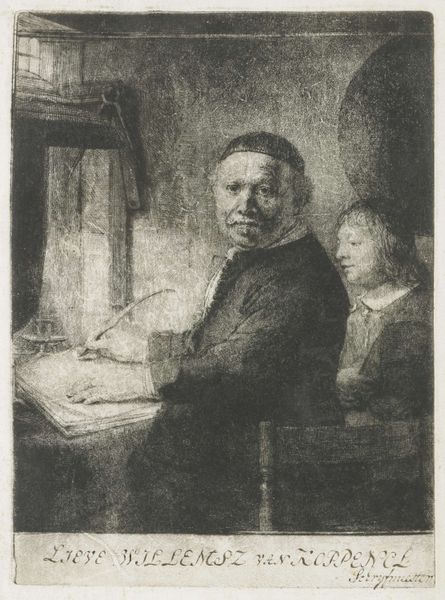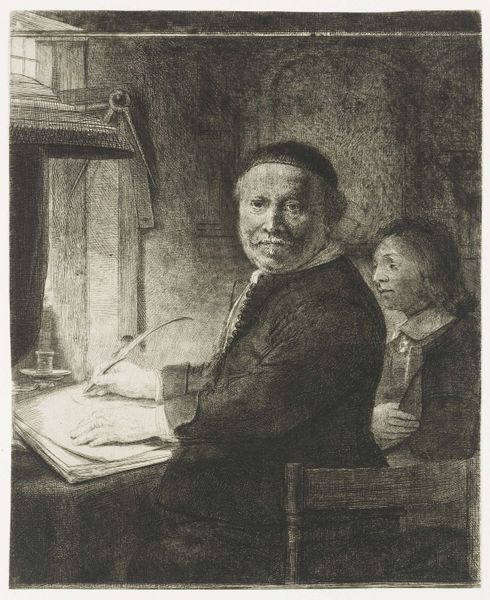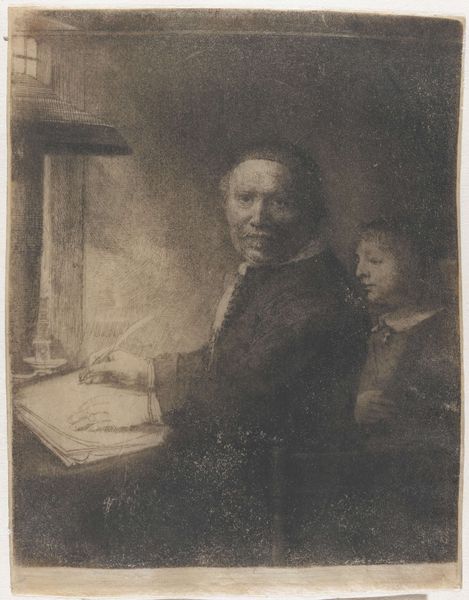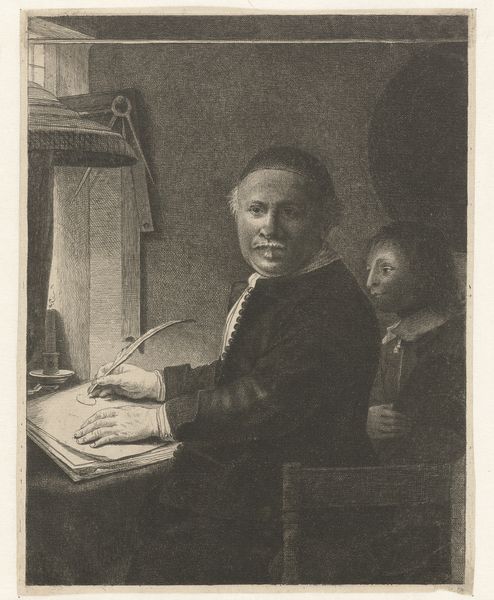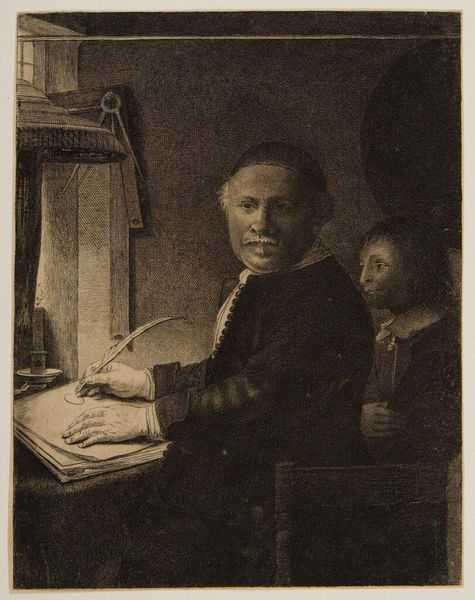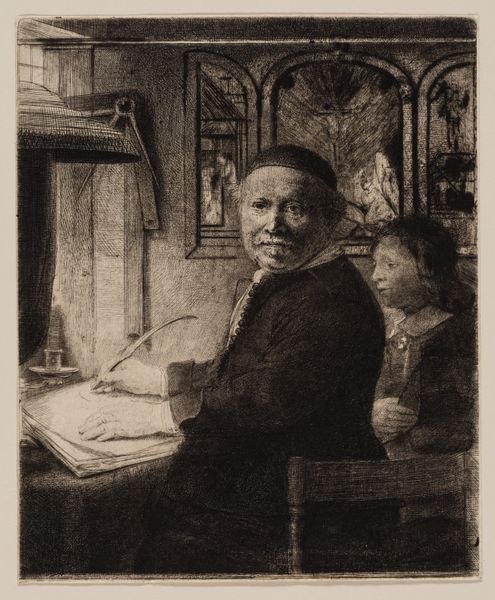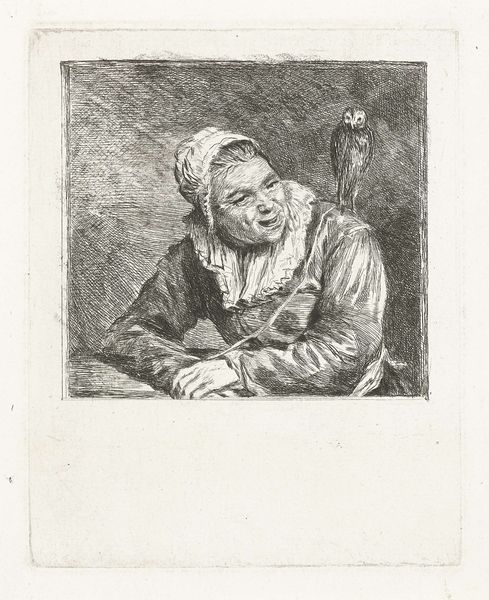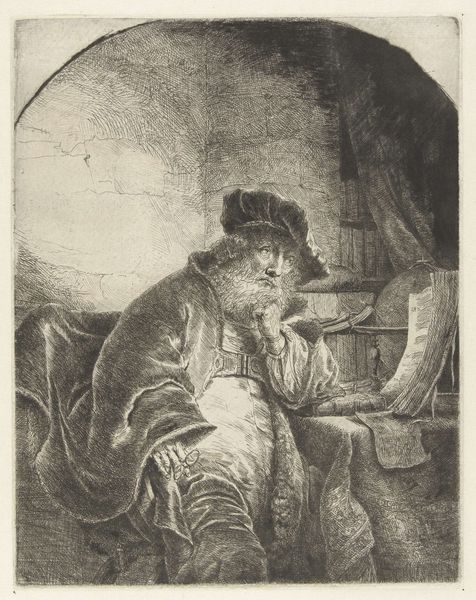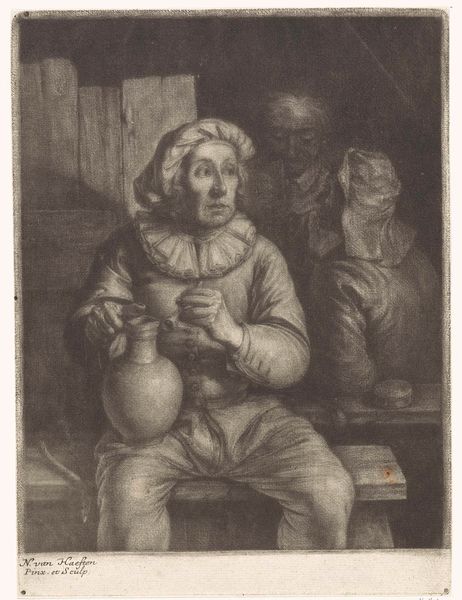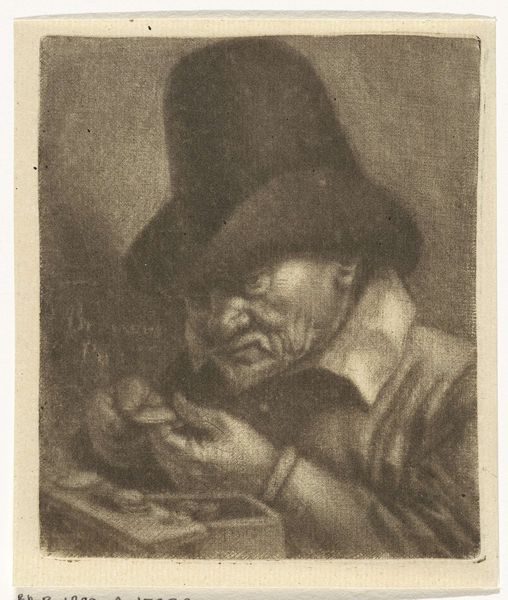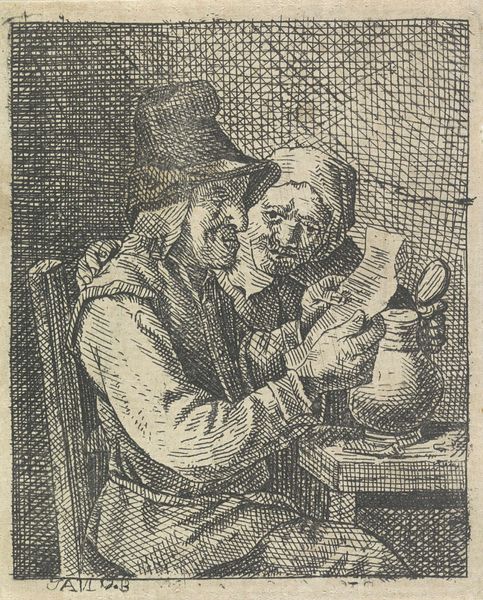
Lieven Willemsz. van Coppenol, writing master: the smaller plate c. 1658
0:00
0:00
drawing, etching
#
portrait
#
drawing
#
baroque
#
etching
#
genre-painting
Dimensions: height 255 mm, width 186 mm
Copyright: Rijks Museum: Open Domain
Editor: Here we have Rembrandt van Rijn’s etching, *Lieven Willemsz. van Coppenol, writing master: the smaller plate,* from around 1658. There’s a really striking sense of intimacy in this portrait. What do you see in this piece? Curator: I see a complex power dynamic at play. The subject, a writing master, is captured in the act of creation, a traditionally privileged role. Yet, Rembrandt's focus on his aging features, the somewhat cluttered space, and the presence of the seemingly subordinate figure in the background complicates this vision of mastery. How might the historical context of class and literacy influence our reading of this image? Editor: That’s interesting. I hadn’t thought about the other figure in terms of class. Curator: Consider the limitations placed on accessing knowledge and skills during that period. Literacy was not universally accessible, especially for women and the lower classes. Is Rembrandt subtly critiquing or perhaps reinforcing these societal hierarchies by depicting the writing master so prominently? Editor: So, Rembrandt may be showing us more than just a portrait, but commenting on the privilege associated with literacy itself? Curator: Precisely. And think about the gaze: the writing master looks directly at us, seemingly aware of his position and its power. How does that direct engagement challenge or affirm the viewer's own position? Who were the people who were viewing Rembrandt's etchings at the time, and how would this portrayal of the writing master have been interpreted by people of diverse backgrounds? Editor: I never would have picked up on those layers. It’s really changed my view. Curator: The beauty of art lies in its capacity to provoke dialogue across time and social strata, inviting us to critically engage with both history and our present moment. Editor: I'll definitely be thinking about power and access differently when I look at portraits from now on. Thanks!
Comments
No comments
Be the first to comment and join the conversation on the ultimate creative platform.
